What are the Dirty Dozen and Clean 15?
+ Benefits of choosing organic foods and how to save money when doing so.
There are a lot of options when it comes to buying food at the grocery store. In addition to choosing between the thousands of products on the market shelves comes the question of whether or not to buy organic.
This is a topic that is highly debated and questioned, so keep reading to find out the benefits of buying organic, what exactly the dirty dozen and clean 15 are, and how to save money at the grocery store while benefiting both your health and your wallet.
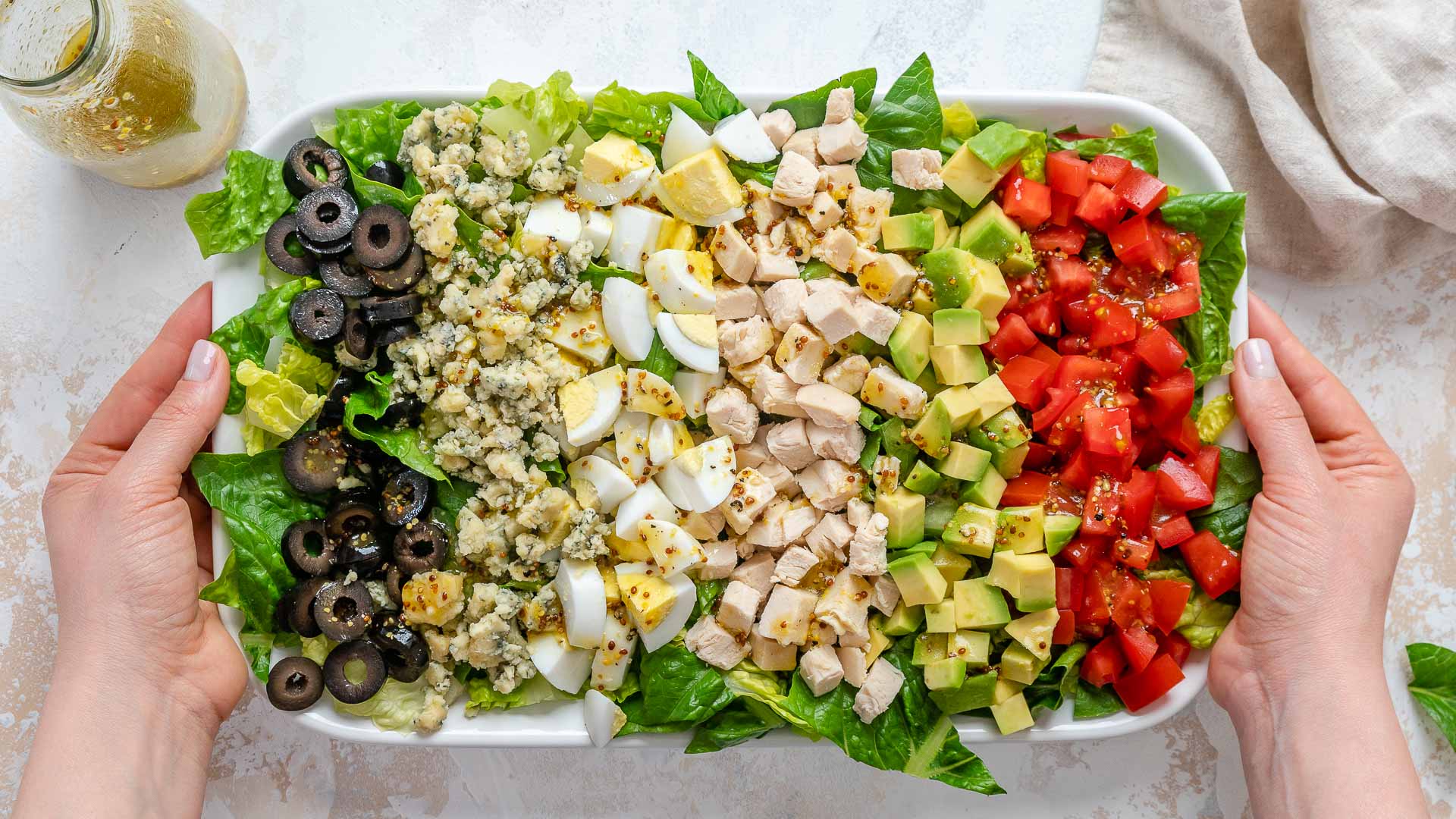
Looking for something delicious to do with all that produce? Try this Loaded Cobb Salad!
What Does Organic Mean and Why Does it Matter?
Organic food is the most natural, purest form of food. Our agriculture system is responsible for feeding millions of Americans every day, which means that practices like using pesticides, herbicides, and other synthetic chemicals on crops, producing genetically modified foods, and feeding animals foods that may not be native to their diets have become more necessary in order to keep up with high food demands and produce desirable products for consumers. While these practices are helpful from a production standpoint, they can take a toll on your health.
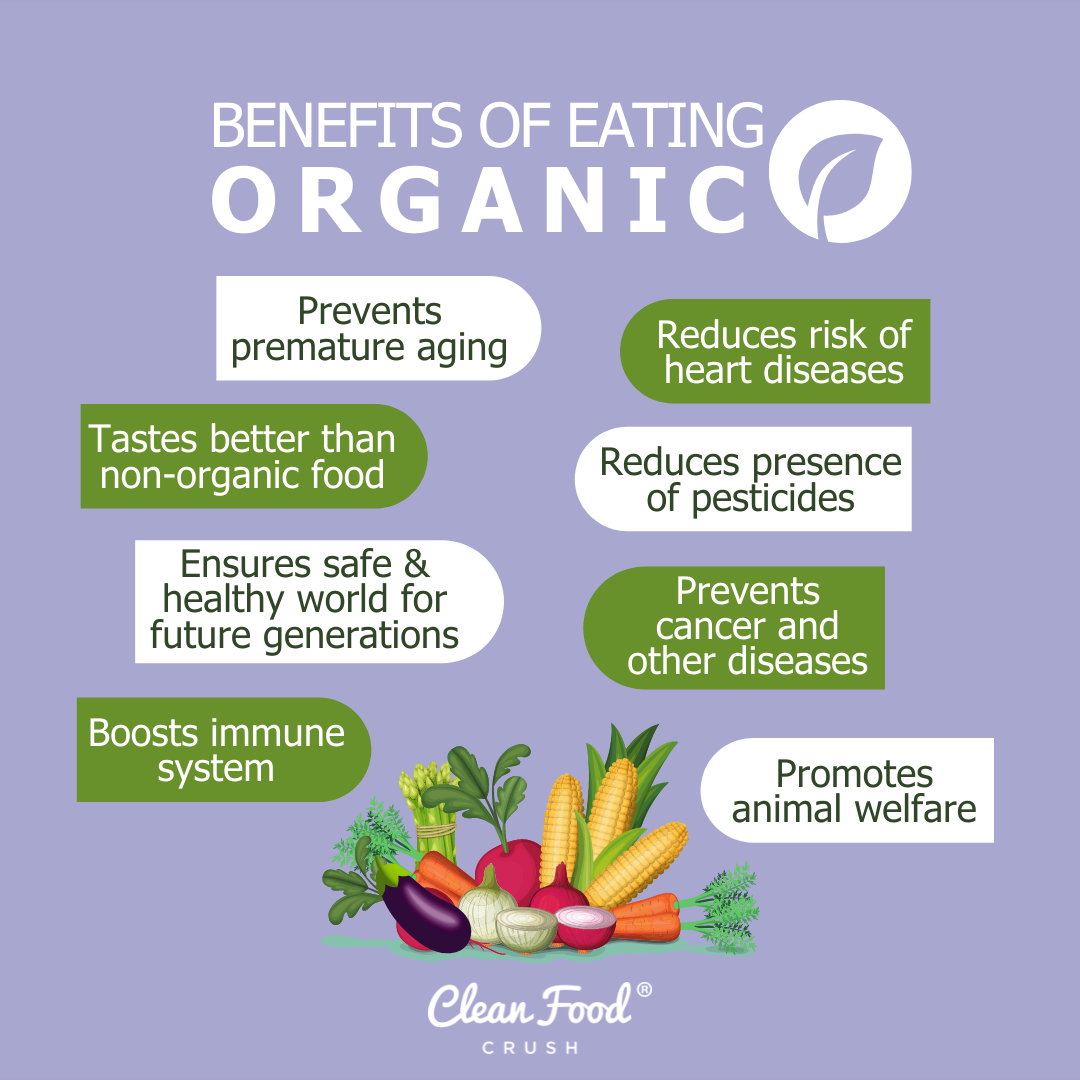
Pesticides and other chemicals used on food are sources of toxins that can lead to disease, including some types of cancer, reproductive harm, damage to your immune system, and more. Genetically modified crops are created to be resistant to certain herbicides and chemicals. This means that more can be used, potentially creating even more exposure for people who eat them. When it comes to animals, conventionally raised hormones may be given things like growth hormones, antibiotics, other medications, and non-organic, GMO feed. This can cause the products that come from them, such as eggs, dairy, and meat to be carriers of these potential toxins. In addition, some sources say that conventionally raised products may be less nutritious compared to organic versions.
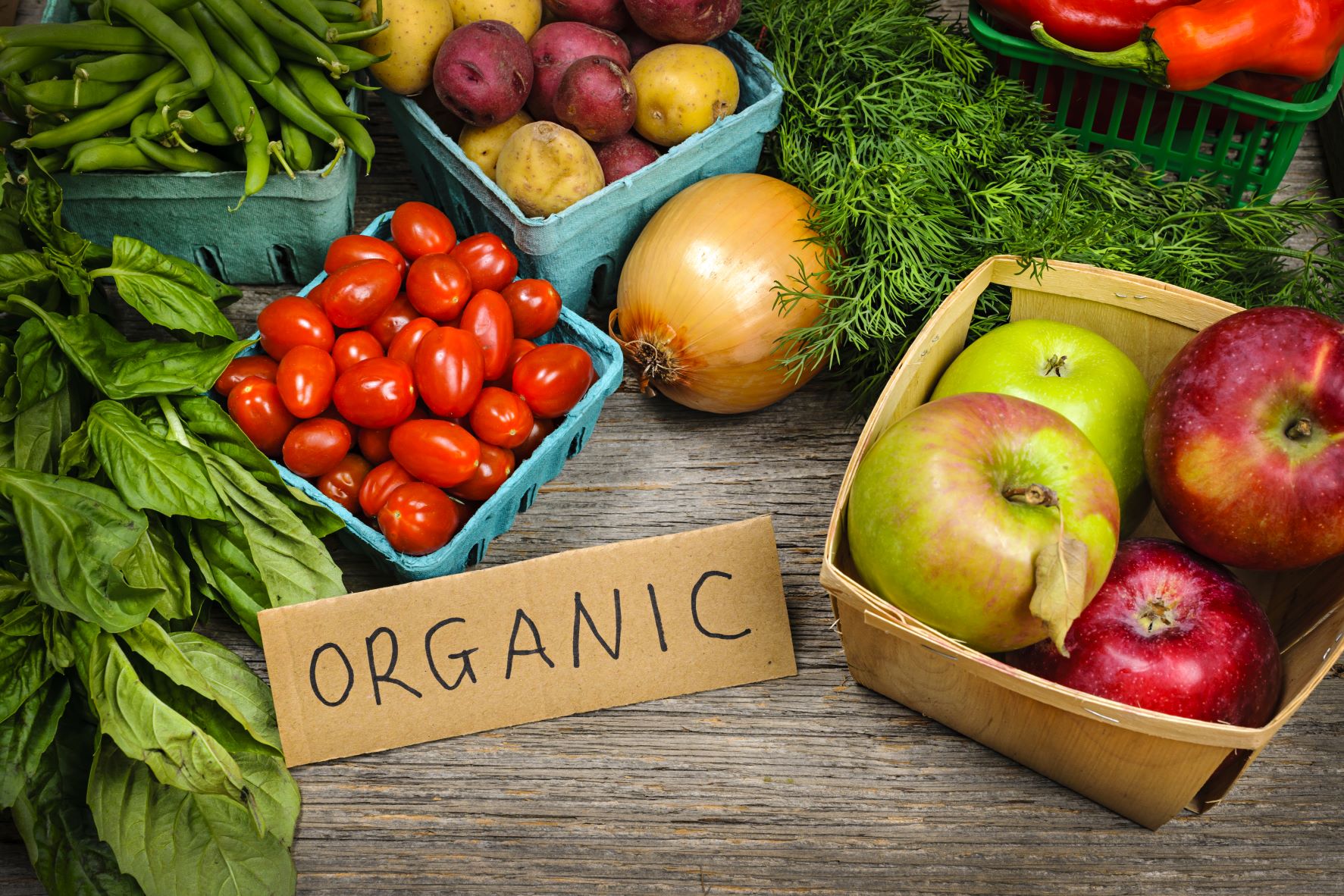
Organic food serves to protect consumers like you from these potentially harmful ingredients and exposures. Organic foods are required to be grown and raised without synthetic pesticides or other chemicals and harmful ingredients and are required to be non-GMO. Organic animal products must come from animals that are given their natural form of food–such as grass for cows. Organic foods may also be fresher and better for the environment by reducing pollution, protecting soil quality, fighting climate change, and more.
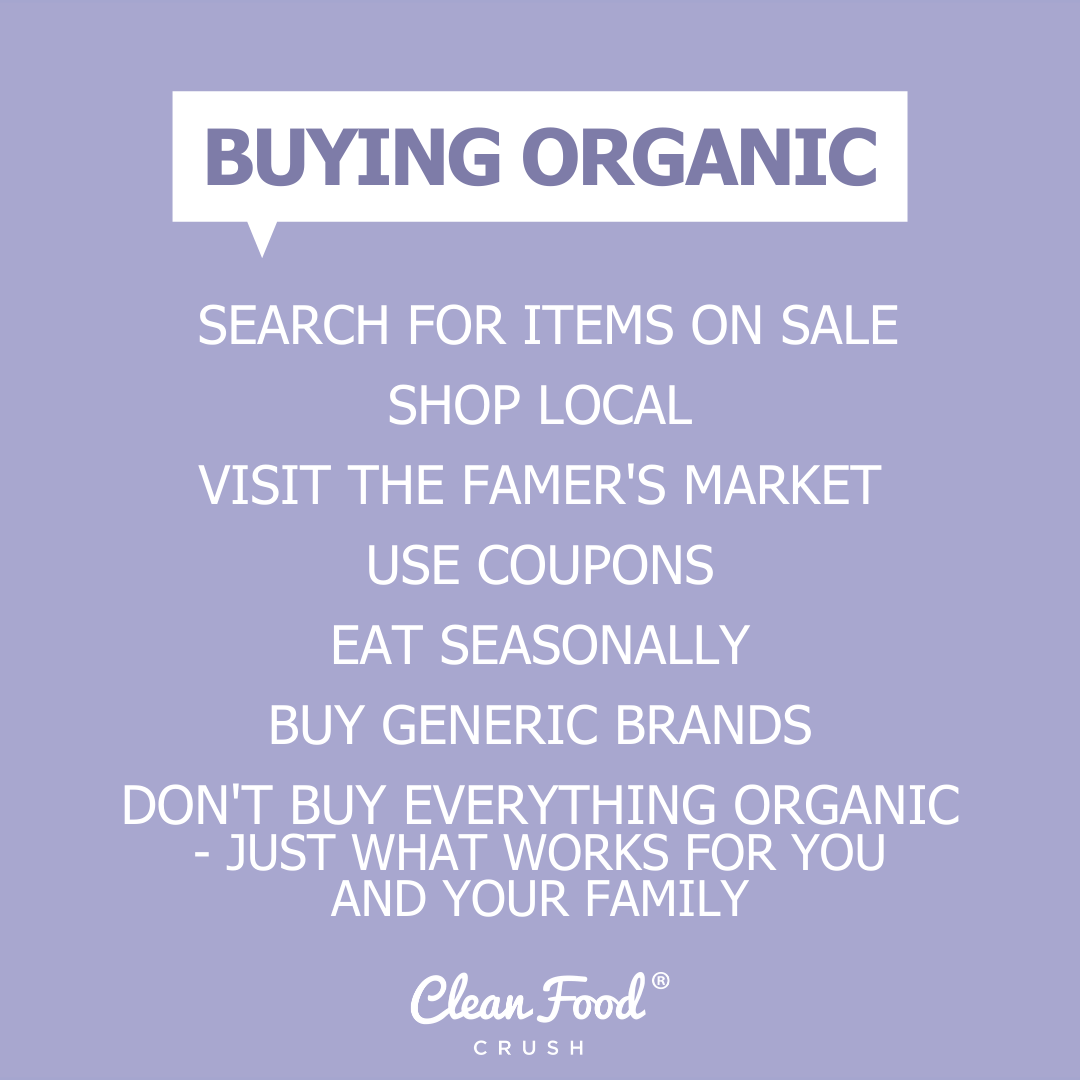
You can identify organic products at the store by looking for labels. The United States Department of Agriculture (USDA) certifies organic farms and foods and provides different labels to indicate organic products. Foods that are at least 95% organic can carry a “USDA Organic” seal on the label, while other foods may be labeled as “100% organic” or “made with organic ingredients”.
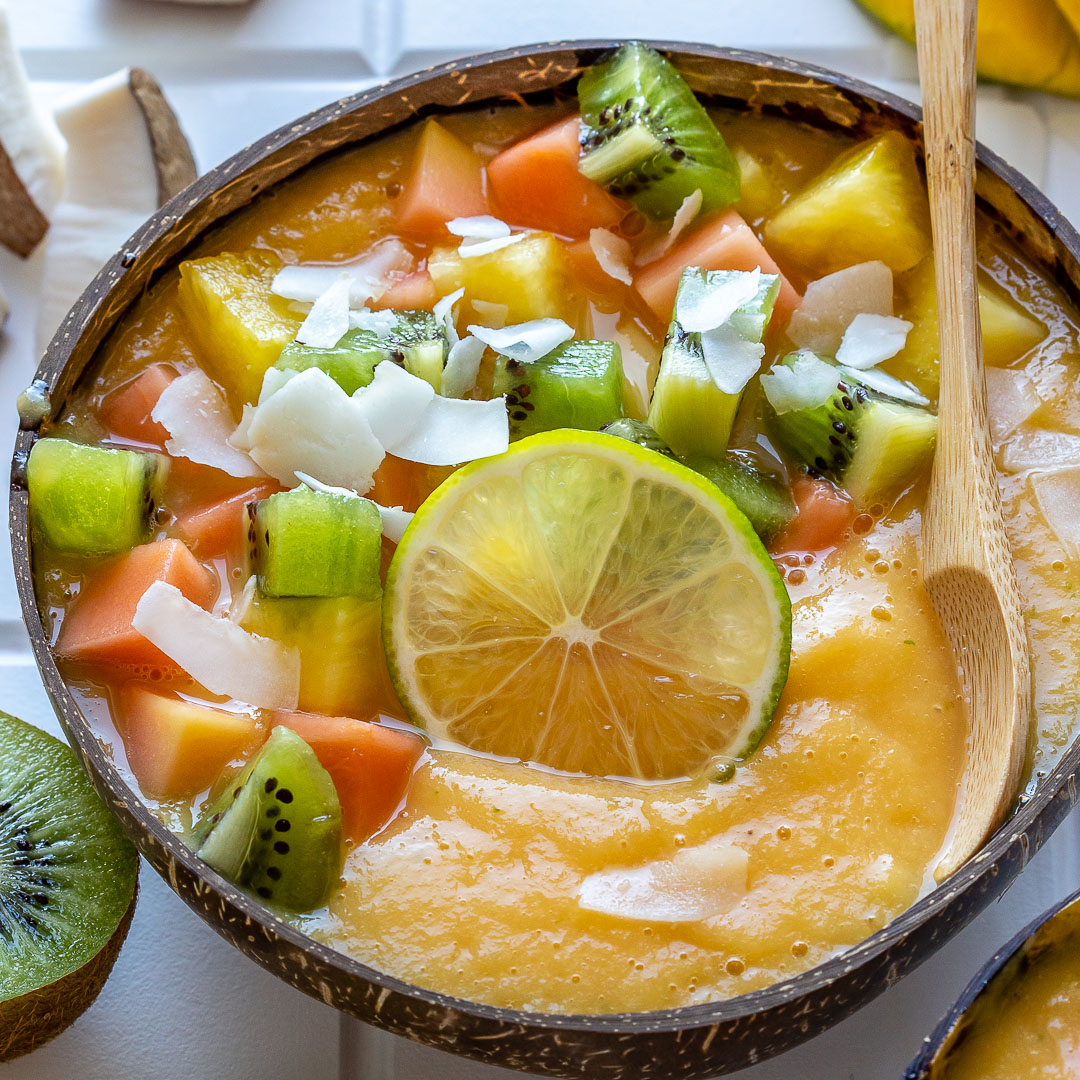
Is your favorite produce fruit? Give these Tropical Smoothie Bowls a try!
What are the Dirty Dozen and Clean 15?
While there are many benefits to organic foods, the downside is that they can be more expensive and harder to find in stores. Thankfully, the Environmental Working Group (EWG) is an organization that monitors and tracks the number of pesticides used on various produce crops. It comes up with a list each year that informs consumers of the produce with the most exposure to pesticides, called the “Dirty Dozen,” which would be most beneficial to buy organic. Similarly, it produces another list called the “Clean 15,” which indicates the produce that will provide the least amount of chemical exposure to humans. Therefore, it may not be as necessary to buy in organic form.
The list is updated each year, and you can find each list below, as well as on the EWG’s website here:
The Dirty Dozen:
- Apples
- Spinach
- Nectarines
- Strawberries
- Kale, Collard, and Mustard Greens
- Peaches
- Cherries
- Grapes
- Celery
- Pears
- Tomatoes
- Bell and Hot Peppers
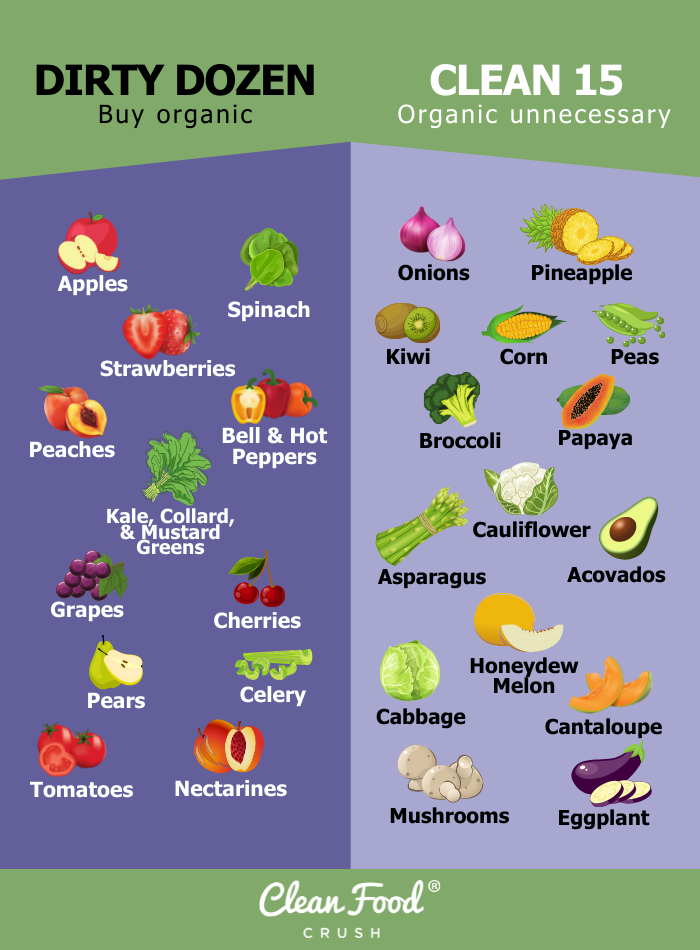
The Clean 15:
- Peas
- Onions
- Pineapple
- Avocados
- Corn
- Papaya
- Eggplant
- Broccoli
- Asparagus
- Cauliflower
- Cantaloupe
- Kiwi
- Mushrooms
- Cabbage
- Honeydew Melon

Tips for Choosing Organic and How to Save Money at the Grocery Store
You absolutely do not need to buy everything in organic form to be healthy. When it comes to produce, buying organic of the dirty dozen items is an excellent place to focus on, while buying the cheaper conventional items from the Clean 15 list is okay. Since these lists don’t include every fruit or vegetable available, another good rule of thumb to follow is to pay attention to produce with thicker skin and those that the skin is not eaten (such as oranges and bananas). These items are likely to provide less chemical exposure and are safe to buy in conventional form.
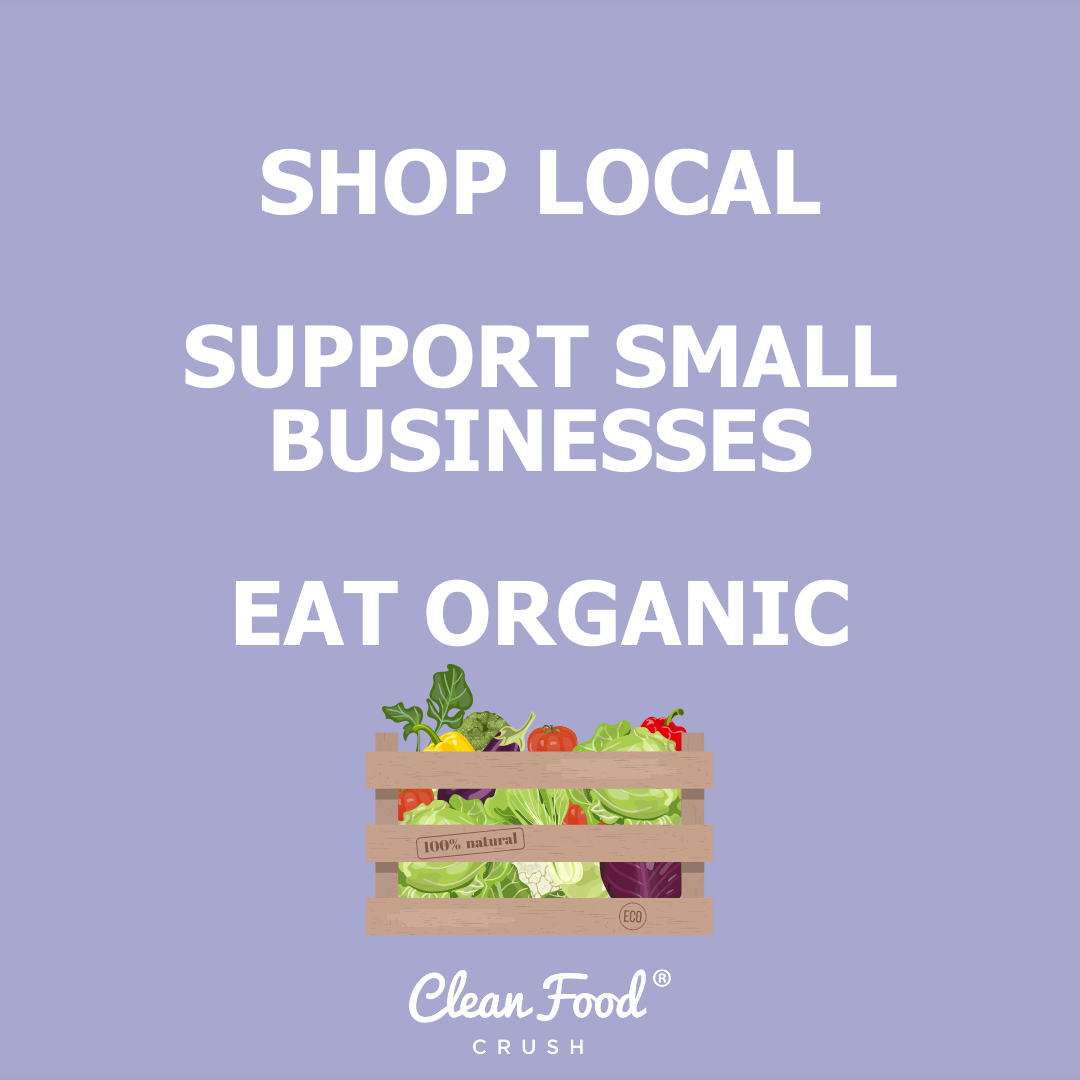
When it comes to other crops like grains and animal products, buying organic has benefits but is still optional. Since it is unrealistic to buy all items in organic form, you can pick and choose what makes sense for your family and budget. Looking for sale items, shopping local at places like farmers’ markets, using coupons, eating seasonally, and buying generic brands are other great ways to save money while eating healthfully. You can read more about grocery shopping tips in this article.
In Summary
Buying organic has benefits to both the environment and your health. However, you don’t have to buy or eat organically to be healthy. In addition, just because a product is organic does not mean that it’s a healthy option. Many junk foods can carry an “organic” seal, too! Ultimately, it is better to eat conventional versions of healthy foods than to not eat them just because they aren’t organic. So, don’t worry too much if buying organic isn’t realistic for you. There are so many other things you can focus on when striving to boost your health. You can read all about them and get delicious recipes for healthy foods on our blog here!

The post What are the Dirty Dozen and Clean 15? first appeared on Clean Food Crush.
from Clean Food Crush https://ift.tt/3B69uR7




No comments:
Post a Comment